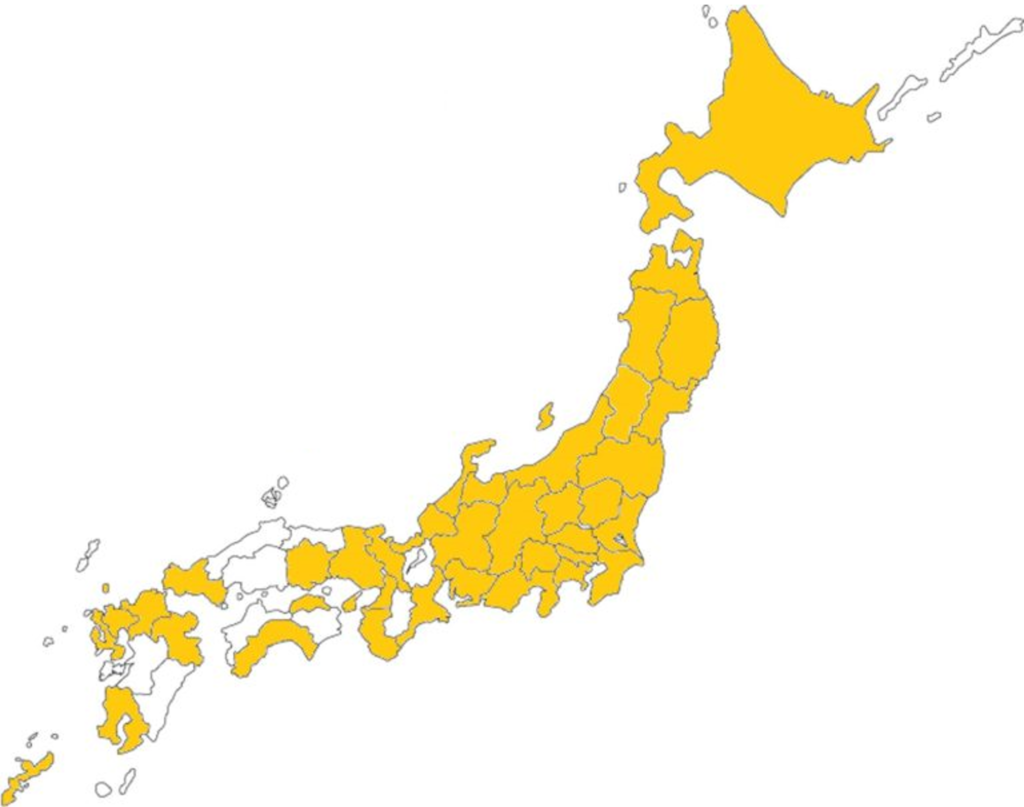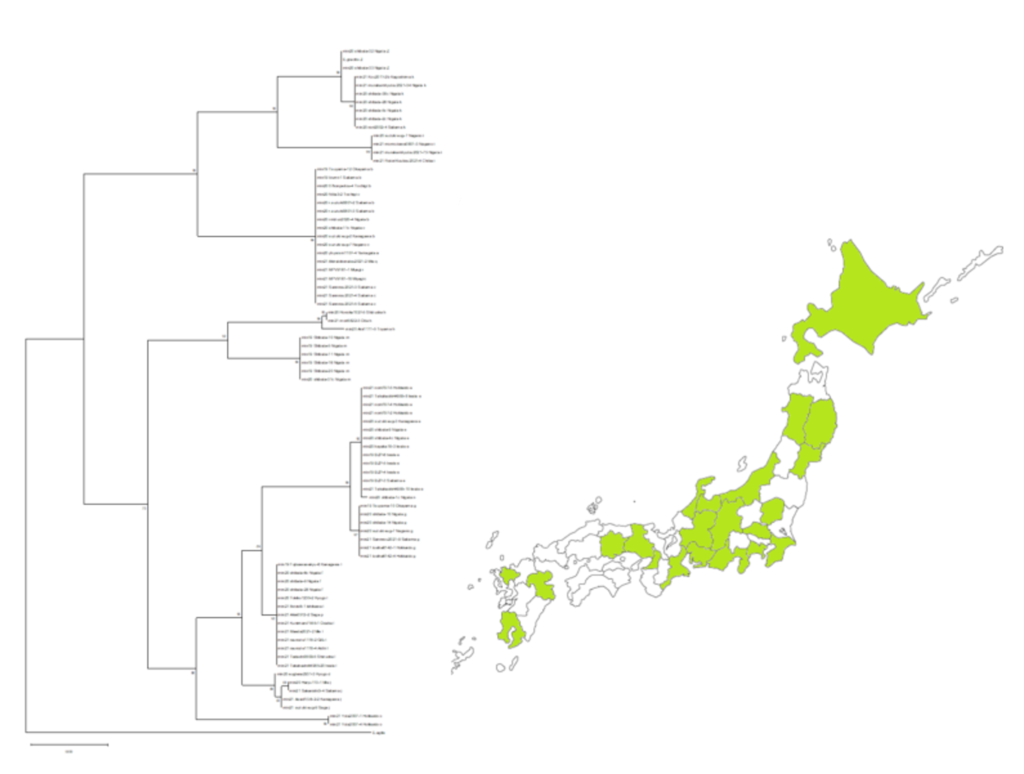
MinMido PJ results report
The "Everyone's Euglena Project" (MinMido PJ) Initiated in 2019
Seeking new strains of euglena, we launched a citizen-participation research project where people from all over Japan sent us water samples. The collection of water samples was conducted over three years, from 2019 to 2021. This article presents a comprehensive summary of the samples collected so far!
Participants and Total Number of Samples in the MinMido PJ
Table 1: Summary of MinMido PJ from 2019-2021
| Year | Participants | Applications | Arrived Samples | Total Samples |
| 2019 | High School Students | 17 schools | 13 schools | 207 |
| 2020 | Families | 80 groups | 58 groups | 295 |
| 2021 | Middle & High School Students | 18 schools | 11 schools | 190 |
| Families | 97 groups | 70 groups | 353 | |
| Total | Schools | 35 schools* | 24 schools* | 1045 |
| Families | 177 groups* | 128 groups* |

Figure 1: Sample Collection Locations
As shown in Table 1, over the past three years, 35 schools and 177 families (including duplicates) participated in the MinMido PJ. Due to the impact of the COVID-19 pandemic, some who applied couldn't unfortunately collect water samples. Nevertheless, we received water samples from 24 schools and 128 families. A total of 1045 samples were collected from all over Japan, from Hokkaido in the north to Okinawa in the south.
About the Obtained Euglena Strains
Table 2: Euglena Strains and Their ITS2 Sequences
| Year | Total Samples | Euglena Present | Established Strains | Types of ITS2 Sequences | New ITS2 Sequences |
|---|---|---|---|---|---|
| 2019 | 207 | 14 | 13 | 5 | 1 |
| 2020 | 295 | 31 | 34 | 15 | 6 |
| 2021 | 543 | 33 | 33 | 12 | 2 |
| Duplicates | – | – | – | 13 | 2 |
| Total | 1045 | 78 | 80 | 19 | 7 |
Out of the 1045 samples collected, 78 samples contained euglena. 80 strains of euglena were successfully isolated and cultured. By examining the ITS2 region of DNA, 19 different strains of euglena were identified, including the commonly used Euglena gracilis Z. Notably, 7 of these were new ITS2 sequences not identified before.
While the ITS2 sequence alone doesn't determine the characteristics of a euglena strain, among these new strains, there might be some with unique functionalities.
Origin of the Euglena Strains

Figure 2: Phylogenetic Tree of Euglena Strains (ITS2) and Their Origin Regions
Lastly, the phylogenetic tree on the left of Figure 2 arranges the obtained euglena strains based on their ITS2 sequence differences. The branches of the tree indicate the sample ID and collection location. The origin regions of the euglena strains are shown in green on the map of Japan on the right. Strains were obtained from a wide range of regions, from Hokkaido in the north to Kagoshima in the south. We will analyze whether any of these strains have unique characteristics, such as resistance to heat or cold.
Furthermore, we have the opportunity to gather academic data on whether there's a relationship between the origin region and the DNA sequence or cellular characteristics of the euglena. Understanding the evolution and distribution of euglena in Japan can provide valuable insights.
In conclusion, over the three years since 2019, thanks to your cooperation, we've been able to obtain a wide variety of euglena strains from various locations across Japan, even in challenging times. We sincerely thank everyone for their contributions!
Moving forward, we aim to investigate whether there are euglena strains with new features and to explore the relationship between their origin regions and their characteristics.
